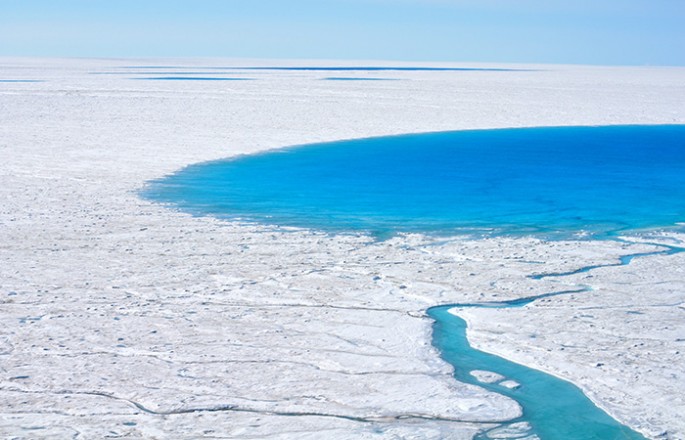The strange occurence of disappearing lakes in Greenland leaves scientists baffled as they continue to study these superglacial lakes and now, a team of scientists has now solved this geological mystery with new research.
Researchers from the Woods Hole Oceanographic Institution along with a University of Washington team revealed that cracks called hydrofractures are forming under the glacial lakes where these can suck water from water bodies entirely in as short as two hours. This mysterious process is finally determined by scientists, revealing how these cracks are made.
The first report of lake draining was in North Lake which is a superglacial lake found in southwestern Greenland. The movement of the ground around the lake measuring 1.5 miles long were recorded during a series of drainage events between 2011 to 2013.
New data reveals that before the lake drains six to 12 hours prior, the ice apparently moved upwards and have shifted from its original place. This meltwater now seeps through vertical channels found in the ice sheet below 3,215 feet.
When the water is collected at the bottom, the ice swells since it can no longer hold the amount of water from the lake which can ultimately build tension underneath the lake. This force can create cracks all throughout the bottom of the lake where it expands the cracks and creates larger channels to drain the water towards the base of the ice sheet.
According to Laura Stevens from the Joint Program in Oceanography under Massachusetts Institute of Technology and the Woods Hole Oceanographic Institution, depending on the force, ice behaves differently, if there's slower force, the ice will stretch but if there is enough force, the ice will crack.
Prior to this study, other scientists have already proposed this theory that when the weight of the water under the frozen lakes start to swell, force will be applied as pressure to ice that will ultimately result in cracks.
However, even if this theory may be proven correct to those glacial lakes that have constant drainage events, not all frozen lakes drain themselves via these cracks.
Glacial lakes begin to form when spring arrives, where warmer temperatures melt the ice from the glaciers that accumulate into water bodies as lakes and ponds on the frozen surface.
This study is published in the journal, Nature.



























